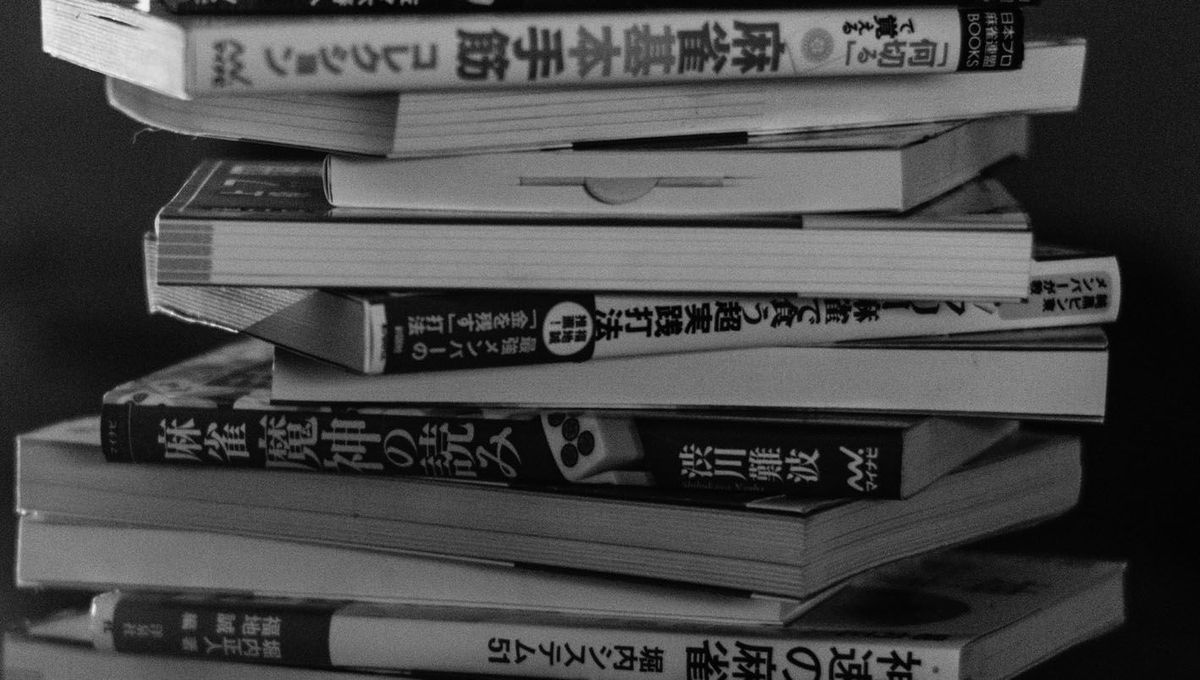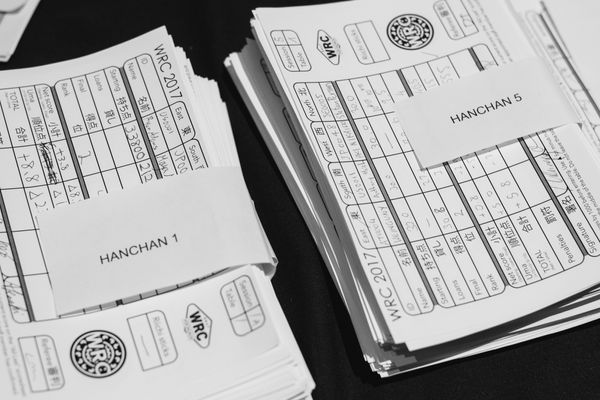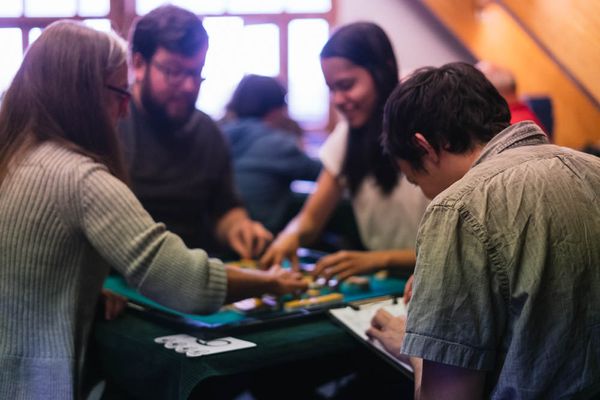Tile Efficiency 101 (Part 3)

Part 3 of the Tile Efficiency series for Osamuko.com is here. This time, it's taatsu theory. More precisely? Ryankan.
I skipped a few parts of things you should already know. If you don't, then read:
Tiles from 3 to 7 are the most flexible. 2's and 8's are a little less flexible. 1's and 9's are the least effective of number tiles. And lastly, character tiles/honors are the most difficult of all to complete melds with.A kanchan (central wait) is superior to a penchan (side wait). That is because a 46 kanchan, for example, can become ryanmen with a 3 or a 7, while a 12 penchan must first draw a 4 and discard the 1, then draw a 5 to have a ryanmen; you're more likely to complete the meld than you are of upgrading the shape.
Also, a kanchan composed purely of tiles from 3 to 7 are superior to other kanchan, because they can expand towards either side (thusly, a 35 kanchan is superior to a 13 or 24 kanchan).
Furthermore, if you have two ryanmen overlapped (23 56) it's less efficient than having two separate ryanmen in two different suits. This is, because if they share an out in common, the number of useful tiles is decreased. Saying "Oh, but I might get a three sided with if I draw the 4 for a 23456!" is no excuse if you have more efficient shapes available. When the same out is repeated for two different taatsu (proto-melds), this is called a "ni-do-uke" (or "double out").
So, if that is clear, then let's continue. This is the source: http://beginners.biz/h_05.html
Taatsu Theory
About ryankan (aka double gut shot).Ryankan is a compound shape of two kanchan waits, such as ![]()
![]()
![]() .
.
The ukeire is of 8 tiles, but...
-
It uses up 3 tiles.
-
If it is left as the final wait, it will become a kanchan.
Considering the two points above, it is clear it is less efficient than a ryanmen.
1.Ryankan and Shanpon
Ex1![]()
![]()
![]()
![]()
![]()
![]()
![]()
![]()
![]()
![]()
![]()
![]()
![]() Tsumo:
Tsumo: ![]()
What becomes a problem with ryankan, is the decission of choosing shanpon over it or not.
In example 1, if we were considering the chances of becoming pinfu, discarding ![]() would be correct. Drawing
would be correct. Drawing ![]()
![]() it becomes pinfu. Likewise, by discarding
it becomes pinfu. Likewise, by discarding ![]() or
or ![]() , there is only 1 type of tile that will give us pinfu. Therefore, it may look better to use the ryankan.
, there is only 1 type of tile that will give us pinfu. Therefore, it may look better to use the ryankan.
However, if we were considering tenpai chance, you should discard ![]() with this hand.
with this hand.
Drawing ![]()
![]()
![]() it perfectly evolves to a smooth 1shanten for pinfu.
it perfectly evolves to a smooth 1shanten for pinfu.
![]()
![]()
![]()
![]()
![]()
![]()
![]()
![]()
![]()
![]()
![]()
![]()
![]() Tsumo:
Tsumo: ![]()
In the case of chunchan tiles (simples, middles, tan yao tiles, 2-8) that can evolve to ryanmen, choosing the shanpon+kanchan shape which has better room for hand evolution is generally more advantageous.
Ex2
![]()
![]()
![]()
![]()
![]()
![]()
![]()
![]()
![]()
![]()
![]()
![]()
![]() Tsumo:
Tsumo: ![]()
San Shoku is visible, so we may want to discard ![]() but, discarding the
but, discarding the ![]() that leaves room for the 3menchan (3-sided-wait) in the manzu (cracks/reds) tiles is an excellent discard.
that leaves room for the 3menchan (3-sided-wait) in the manzu (cracks/reds) tiles is an excellent discard.
![]()
![]()
![]()
![]()
![]()
![]()
![]()
![]()
![]()
![]()
![]()
![]()
![]() Tsumo:
Tsumo: ![]()
Ex3
![]()
![]()
![]()
![]()
![]()
![]()
![]()
![]()
![]()
![]() (pon)
(pon) ![]()
![]()
![]() Tsumo:
Tsumo: ![]()
In the case of an open hand, taking the shanpon becomes more useful.
In example 3, we should cut ![]() and aim for the pon-ten (pon and tenpai) of
and aim for the pon-ten (pon and tenpai) of ![]() and
and ![]() .
.
Discarding ![]() the uke-ire number doesn't change, however the speed of tenpai is different. That is because you can only call a chii from the player on your left, but you can call a pon from anyone.
the uke-ire number doesn't change, however the speed of tenpai is different. That is because you can only call a chii from the player on your left, but you can call a pon from anyone.
Ex4
![]()
![]()
![]()
![]()
![]()
![]()
![]()
![]()
![]()
![]()
![]()
![]()
![]() Tsumo:
Tsumo: ![]()
So, we basically said that is is generally better to take shanpon over kanchan, but this is not so black-and-white.
In example 4, we want to take the better 1shanten shape by discarding ![]() . Not just because of the
. Not just because of the ![]() , the backfire of drawing
, the backfire of drawing ![]() also becomes useful.
also becomes useful.
![]()
![]()
![]()
![]()
![]()
![]()
![]()
![]()
![]()
![]()
![]()
![]()
![]() Tsumo:
Tsumo: ![]()
By discarding ![]() or
or ![]() here, the uke-ire number is greatly increased.
here, the uke-ire number is greatly increased.
Furthermore, if we discaded ![]() to fixate on the shanpon, drawing
to fixate on the shanpon, drawing ![]() isn't any useful at all. It becomes nothing more than a complete backfire.
isn't any useful at all. It becomes nothing more than a complete backfire.
TheoryIn a hand with a ryankan, when deciding whether to take shanpon or kanchan, we compare the number of tiles of evolution towards good shape.
Generally, there are many cases where shanpon is better.
2.Ryankan that are easy to overlook
Since ryankan that are embedded inside of melds are easy to overlook, let's be careful.Ex5
![]()
![]()
![]()
![]()
![]()
![]()
![]()
![]()
![]()
![]()
![]()
![]()
![]() Tsumo:
Tsumo: ![]()
With a hand of a shape such as example 5's, there are people who easily tsumo-kiri (tsumo-kill/discard upon picking up) the ![]() .
.
We can see the ii-pei-kou, but if we extract the ![]()
![]()
![]() meld, we can see we have a
meld, we can see we have a ![]()
![]()
![]() ryankan in the pinzu (circles/dots).
ryankan in the pinzu (circles/dots).
If we discard the ![]() here, we eliminate the
here, we eliminate the ![]() uke-ire completely.
uke-ire completely.
Ex6
![]()
![]()
![]()
![]()
![]()
![]()
![]()
![]()
![]()
![]()
![]()
![]()
![]()
In example 6, we're one away from ittsuu (full straight), but we have a ryankan in the manzu.
Even if we draw a safe tile, by descarding ![]() we are completely missing the chance of tenpai by drawing
we are completely missing the chance of tenpai by drawing ![]() .
.
3.Irregular kanchan
Rarely, we come into shapes that are "distant ryankan."With a shape like
![]()
![]()
![]()
![]()
![]()
![]()
we have an uke-ire of 8 tiles by using up 6 tiles.
Ex7
![]()
![]()
![]()
![]()
![]()
![]()
![]()
![]()
![]()
![]()
![]()
![]()
![]() Tsumo:
Tsumo: ![]()
You may run many times in cases like this where you must take appart the ittsuu.
Of course we should aim for mentanpin (riichi tan yao pinfu) and iipeikou, but between discarding ![]() and
and ![]() there's a huge difference. If we discard the
there's a huge difference. If we discard the ![]() , we completely lose the uke-ire for
, we completely lose the uke-ire for ![]() .
.
![]()
![]()
![]()
![]()
![]()
![]()
![]()
![]()
![]()
![]()
![]()
![]()
![]() Tsumo:
Tsumo: ![]()
![]()
![]()
![]()
![]()
![]()
![]()
![]()
![]()
![]()
![]()
![]()
![]()
![]() Tsumo:
Tsumo: ![]()
Okay, so that's it for now. You may have noticed the importance of "backfire follow-up" or "urame follow-up." Many times you make a decission, a backfire may happen. Before discarding, think about what becomes a loss, and how will you deal with that loss. Did it ever happen to you that you ended up picking up and discarding a whole series of tiles in a spiral because of one single early discard? Then you're clearly not looking out for your backfires.
Also, sorry I took so long to finish this one up. It was my birthday last week, and yeah, stuff.
See you next time.



